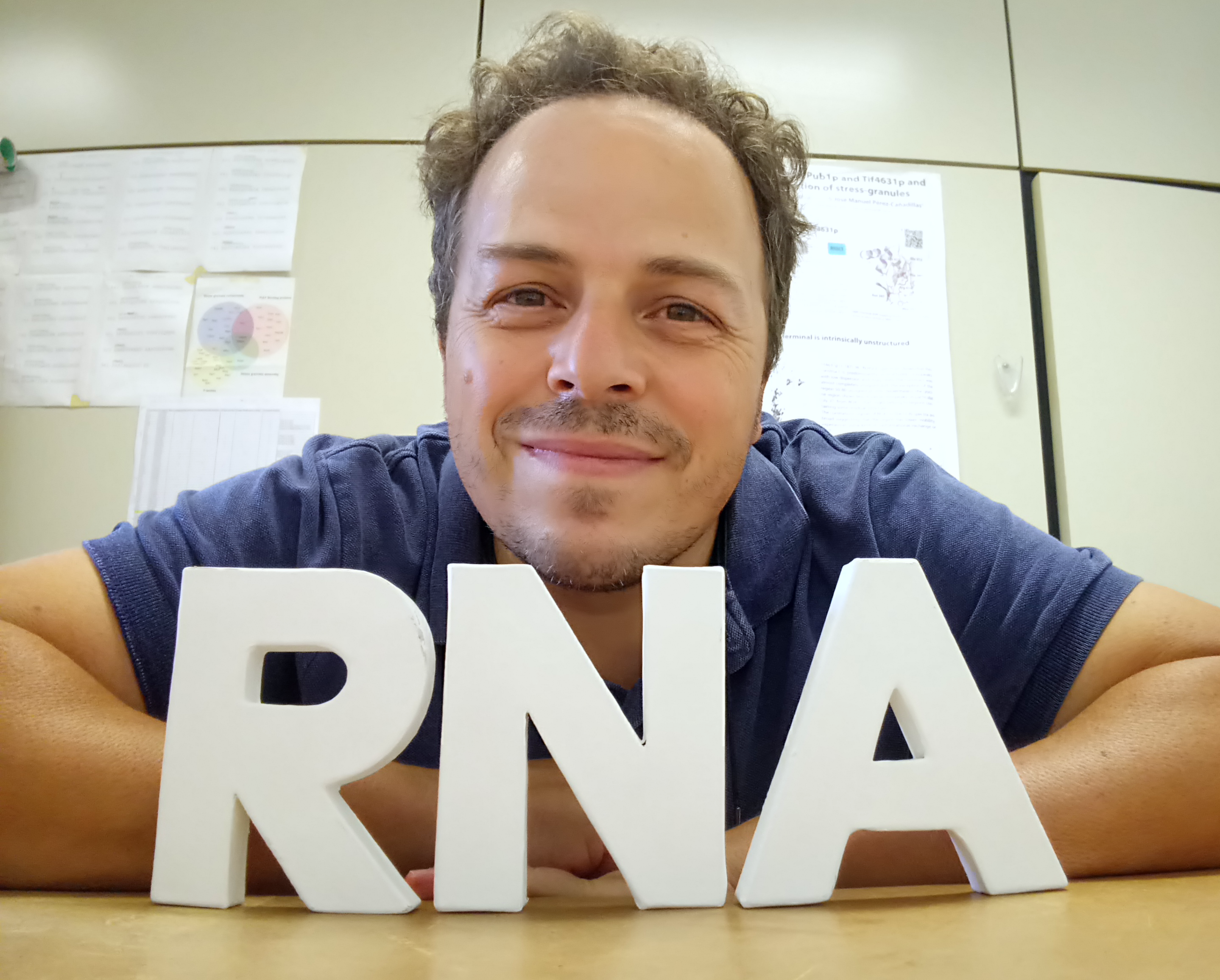 |
José Manuel Pérez Cañadillas |
||
|
Research Scientist (Científico titular) Since 2008 |
|||
|
O.R.C.I.D: 0000-0002-8266-5502 https://orcid.org/0000-0002-8266-5502 WOS Research ID: J-5748-2013 https://www.webofscience.com/wos/author/record/J-5748-2013
ScopusID 6603075755. https://www.scopus.com/authid/detail.uri?authorId=6603075755
|
|||
| resline_1.2 resline_1.7 resline_1.9 resline_3 resline_4 | |||
| Jose Manuel Pérez Cañadillas is Bachelor in Organic Chemistry (U. Complutense Madrid , 1993) and PhD in Physical Chemistry (U. Autónoma Madrid, 1999). After his thesis, done in the CSIC (IEM) with visits to the Texas A&M University, he spent 5 years as postdoctoral fellow in the Laboratory of Molecular Biology and the Center for Protein Engineering from the MRC in Cambridge at the groups of Profs. Varani and Fersht. He came back to Spain (IQFR-CSIC) in 2005 as “Ramón y Cajal” researcher and become “Científico Titular” in 2008.
Currently he leads a structural biology group studying proteins involved in RNA cell cycle. We study RNA binding proteins (RBPs) and their interactions at structural detail using mainly NMR and other of biophysical (ITC, DLS, MALS, FA) and structural (X-ray, SAXS) techniques; some in close collaboration with expert groups. Together with the folded domains, RBPs often contain large intrinsically disordered domains (IDD) with important roles in their function. We study both types of protein domains in the group. Specifically, we are interested in RBPs involved in RNA life cycle; in particular those involved in last stages of transcription, in the cell nuclei, and in early phases of translation, in the cytoplasm. Many of the proteins we study play important roles in the maturation of mRNPs (Gbp2, Hrb1 Nrd1, Nab3, Hrp1 or CstF64), whereas others are essential for the regulation of translation and stress response (eIF4G, Pab1, Pub1). Finally, some our RBPs are involved in human diseases (Gemin-5 and hnRNP A1), being their RNA binding activities and other biophysical properties (e.g. formation of protein condensates) key on the onset and development of the diseases. |
|||
|
Funding Ongoing:
|
|||
